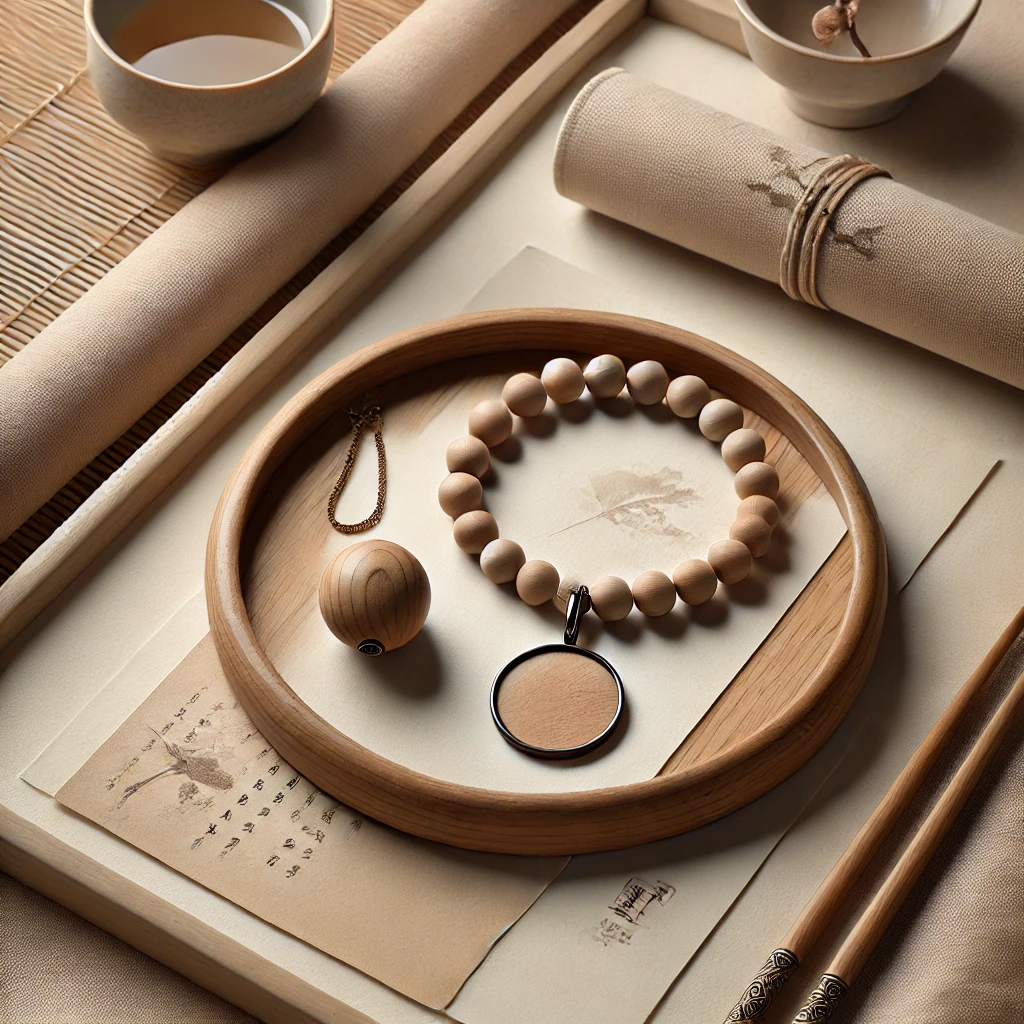
The History and Evolution of Wooden Bracelets in Chinese Culture
Introduction
In China, wooden bracelets didn’t just “become trendy.” They grow out of two deep roots: Buddhist prayer beads (nian zhu/mala) and the wenwan tradition of scholar’s handheld objects. Whether used for chanting or quiet contemplation, wooden bead bracelets—from Bodhi seed beads to sandalwood and agarwood bracelets—carry warmth, touch, and a sense of calm that people still look for today.
From Prayer Beads to Wrist Bracelets
Buddhist mala beads came to China with Buddhism. A full mala typically has 108 beads, with smaller versions—54 or 27—used for convenience. Scholars generally agree the practice originated in Indian traditions and was adopted widely in China; East Asian art from the Northern Wei period already shows figures holding malas. The number 108 has multiple doctrinal explanations, but the counting practice itself remained remarkably consistent.
Materials & Meanings: Bodhi, Sandalwood, Agarwood
“Bodhi seeds” in China refer to a wide range of plant species used for mala beads—an ethnobotanical survey documented 47 species (plus 2 varieties) across 19 families and 39 genera. Many of these seeds have traditional medicinal or edible uses as well. Among aromatic woods, sandalwood and agarwood (oudh) serve both as incense and bracelet materials. Their gentle fragrance has been linked to mindfulness and prayer for centuries in Buddhist contexts.

Court Style: Qing Dynasty Chaozhu and Status
In the Qing dynasty, the Buddhist rosary was adapted into the court necklace (chaozhu)—a regulated accessory of 108 beads with specific materials and colors denoting rank. Museums and archives note that chaozhu drew directly from Buddhist prayer beads; while initially connected to piety, by the 18th century it clearly expressed court hierarchy and ritual order.
From Wenwan to Today: Tactile Culture and Everyday Warmth
Beyond religion, the wenwan tradition—flourishing from the Tang-Song through Ming-Qing—celebrated tactile, handheld objects: walnuts, olive-pit carvings, and wooden strings prized for their patina and feel. Modern wooden bead bracelets inherit this sensibility, inviting slow care and intimate use in daily life.
How Choosing Today
- Use: For chanting/meditation, choose mala 108 beads or compact 54/27 versions; for daily wear, sets of 18/21 beads are comfortable.
- Material: For aroma and calm, try sandalwood or agarwood bracelets; for cultural symbolism, Bodhi seed beads or hardwood wooden bead bracelets fit well.
Conclusion
The story of wooden bracelets isn’t just in galleries—it lives in our palms. We chant with them, we handle them, we let them keep us company. Materials evolve and tastes change, but our need for warmth and quiet protection remains. So the next time you search wooden bead bracelet or Bodhi seed beads, pause and feel the grain: there’s a conversation between the bead and your hand.
